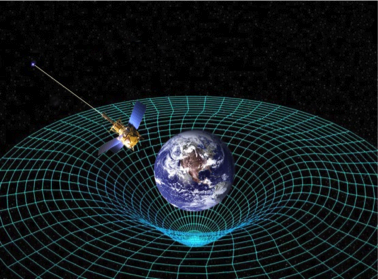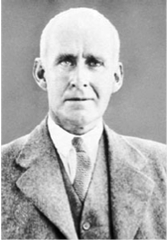-
WHAT IS NASA PHYSICS?
-
MODULES
-
Forces and Motion
-
Conservation of Momentum & Energy
-
Temperature and Heat
-
Fluids
-
Optics
-
Electromagnetic Spectrum
-
Modern Physics
-
Anticipation Guide 7
-
Intro to Modern Physics
-
Blackbody Radiation
-
The Ultraviolet Catastrophe
-
The Photoelectric Effect
-
Bohr's Atom
-
Spectra
-
Radioactive Decay
-
Special Relativity (SR)
-
Simultaneity
-
Distance and Time
-
General Relativity
-
May the Forces be with You
-
Modern Physics Notebook
-
Assessment Problems 7
-
-
Useful Things
-
-
SITE MAP
Modern Physics
-
Anticipation Guide
-
Intro to Modern Physics
-
Blackbody Radiation
-
The Ultraviolet Catastrophe
-
The Photoelectric Effect
-
Bohr's Atom
-
Spectra
-
Radioactive Decay
-
Special Relativity (SR)
-
Simultaneity
-
Distance and Time
-
General Relativity
-
May the Forces be with You
-
Notebook
-
Assessment Problems

If the weirdness of modern physics intrigues you, The Dancing Wu Li Masters is an excellent book that describes – without mathematics – quantum physics in a fascinating and understandable way. Although it has a 1970s hippy-mysticism about it I still recommend reading it!
General Relativity
 Albert Einstein’s wrote five game-changing papers in 1905, often called his miracle year. These included the photoelectric effect, an explanation of Brownian motion (discovery of the atom), and special relativity. But it was not until 1915 that Einstein developed a more “general” theory of relativity that explained gravity and accelerating frames of reference. Here, Einstein envisioned that the force of gravity was felt as a result of the distortion of space itself by matter. In this manner, the Moon orbits the Earth because it is traveling along a line of curved space. Gravity is the warping of space-time, not a force acting at a distance.
Albert Einstein’s wrote five game-changing papers in 1905, often called his miracle year. These included the photoelectric effect, an explanation of Brownian motion (discovery of the atom), and special relativity. But it was not until 1915 that Einstein developed a more “general” theory of relativity that explained gravity and accelerating frames of reference. Here, Einstein envisioned that the force of gravity was felt as a result of the distortion of space itself by matter. In this manner, the Moon orbits the Earth because it is traveling along a line of curved space. Gravity is the warping of space-time, not a force acting at a distance.
Light too is effected by the distortion of space around massive objects. This was proven in 1919 when Arthur Eddington, a British astronomer led an expedition to Principe Island, West Africa, where photographs of distant stars taken during an eclipse of the Sun showed their light to have been bent by passing near our massive Sun, just as Einstein had predicted. Einstein was a supreme genius.
 NASA/Hubble Space Telescope image
NASA/Hubble Space Telescope image Sir Arthur; Image from WikipediaA more spectacular demonstration of light being bent by a great mass is the Einstein Cross. A galaxy 400 million light years away is seen as a central nucleus and diffuse arms. Four bright spots around the galaxy are images of a quasar 8 billion light years away. As the quasar light passes near and through the diffuse mass of the galaxy the quasar light is bent and focused into four images. Quasars are the brightest things in the universe, their prodigious energy coming from mass being sucked into supermassive black holes.
Sir Arthur; Image from WikipediaA more spectacular demonstration of light being bent by a great mass is the Einstein Cross. A galaxy 400 million light years away is seen as a central nucleus and diffuse arms. Four bright spots around the galaxy are images of a quasar 8 billion light years away. As the quasar light passes near and through the diffuse mass of the galaxy the quasar light is bent and focused into four images. Quasars are the brightest things in the universe, their prodigious energy coming from mass being sucked into supermassive black holes.
Black holes were predicted from Einstein’s general theory of relativity. If there were a massive enough object, light could not escape from it’s bending of space-time so that it would be perfectly black. Black holes were considered mathematical curiosities until Stephen Hawking and other physicists calculated details of their existence. Although black holes themselves cannot be imaged – they wouldn’t be black otherwise – the material that falls into black holes, such as quasars, have been detected as emitting X-rays. You can almost imagine it as the screams of things about to be lost forever.
The general theory of relativity is so complex that only a tiny number of people truly understand it, and so the student is not expected to. The general theory and the special theory, in their complexity, actually reduce physics to a simple, almost poetic line: matter is energy is space-time. Chant that a few times and then go outside to look at the sky and the birds and trees, fall in love, and relish your momentary appearance in space-time.
© 2013 by Wheeling Jesuit University/Center for Educational Technologies®. 316 Washington Ave., Wheeling, WV 26003-6243. All rights reserved. Privacy Policy and Terms of Use.

